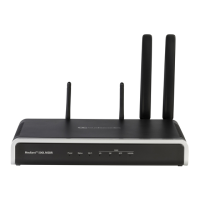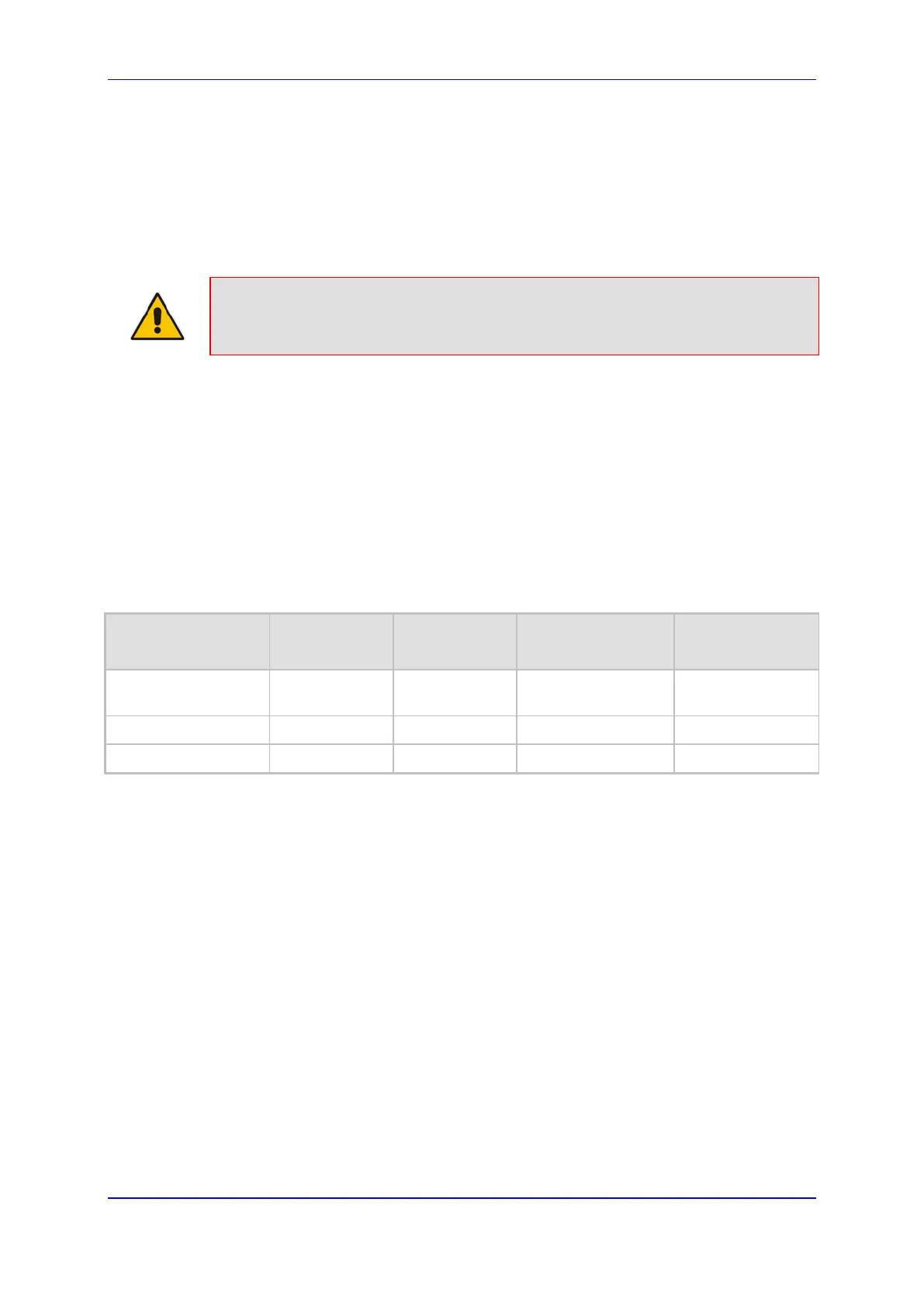User's Manual 27. Routing
Version 6.8 421 Mediant 500L MSBR
806 Media Limits Exceeded: The device generates this response code when the call
is terminated due to crossed thresholds of QoE metrics such as MOS, packet delay,
and packet loss (configured in the Quality of Experience Profile table) and/or media
bandwidth (configured in the Bandwidth profile table). When this occurs, the device
sends a SIP 480 (Temporarily Unavailable) response to the SIP entity. This is
configured by 1) assigning an IP Group a QoE and/or Bandwidth profile that rejects
calls if the threshold is crossed, 2) configuring 806 in the Reasons for Tel-to-IP
Alternative Routing table and 3) configuring an alternative routing rule.
Note: The device also plays a tone to the endpoint whenever an alternative route is
used. This tone is played for a user-
defined time, configured by the
AltRoutingToneDuration parameter.
Depending on configuration, the alternative routing is done using one of the following
configuration entities:
Outbound IP Routing Rules: You configure alternative routing rules for a specific
routing rule in the Outbound IP Routing table. If the destination of the "main" routing
rule is unavailable, the device searches the table for the next matching rule (e.g.,
destination phone number), and if available attempts to re-route the call to the IP
destination configured for this alternative routing rule. For more information on
configuring alternative Tel-to-IP routing rules, see ''Configuring Outbound IP Routing''
on page
405. The table below shows an example of alternative routing where the
device uses the first available alternative routing rule to re-route the initial,
unsuccessful Tel-to-IP call destination.
Table 27-5: Alternative Routing based on SIP Response Code Example
Destination
Phone Prefix
IP Destination SIP Response Rule Used?
Main Route
40 10.33.45.68
408 Request
Timeout
No
Alternative Route #1
40 10.33.45.70 486 Busy Here No
Alternative Route #2
40 10.33.45.72 200 OK Yes
Proxy Sets: Proxy Sets are used for Server-type IP Groups (e.g., an IP PBX or
proxy), which define the address (IP address or FQDN) of the server (see ''Configuring
Proxy Sets'' on page
297). As you can configure multiple IP destinations per Proxy
Set, the device supports proxy redundancy, which works together with the alternative
routing feature. If the destination of a routing rule in the Outbound IP Routing table is
an IP Group, the device routes the call to the IP destination configured for the Proxy
Set associated with the IP Group. If the first IP destination of the Proxy Set is
unavailable, the device attempts to re-route the call to the next proxy destination, and
so on until an available IP destination is located. To enable the Proxy Redundancy
feature for a Proxy Set, set the IsProxyHotSwap parameter to 1 and the
EnableProxyKeepAlive parameter to 1.
When the Proxy Redundancy feature is enabled, the device continually monitors the
connection with the proxies by using keep-alive messages (SIP OPTIONS). The
device sends these messages every user-defined interval (ProxyKeepAliveTime
parameter). If the first (primary) proxy in the list replies with a SIP response code that
you have also configured by the 'Keep-Alive Failure Responses' parameter, the device
considers the Proxy as down; otherwise, the device considers the proxy as "alive". If
the proxy is still considered down after a user-defined number of re-transmissions
(configured by the HotSwapRtx parameter), the device attempts to communicate
(using the same INVITE) with the next configured (redundant) proxy in the list, and so
on until an available redundant proxy is located. Once an available proxy is located,

